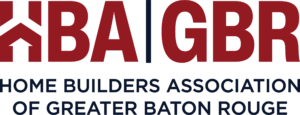Brought to you by HBA Platinum Industry Partner, ProSource Wholesale
If you flip on any news station, you’ll be showered with stories about rising inflation, interest rates, and construction costs. So, does that mean you should put off renovating your home?
We think not! With precise planning and a little creativity, anyone can renovate their home without breaking the bank. In this guide, brought to you by ProSource Wholesale, we discuss how planning, materials, and financing can help you execute your dream renovation!
Create a Budget and Plan
Setting a Realistic Budget
The key to an affordable renovation is setting a realistic budget. We understand how easy it is to get carried away with grand ideas and high-end finishes. However, without a clear budget, costs can quickly spiral out of control. Here’s how to approach it:
Research Costs: Investigate the typical costs for the types of renovations you’re considering. Look at materials, labor, and any additional expenses such as permits or inspections.
Include a Buffer: Unexpected expenses are almost inevitable in any renovation project. Include a buffer of at least 10-20% of your total budget to cover unforeseen costs.
Stick to Your Budget: Once your budget is set, make a commitment to stick to it. Track all expenses meticulously and make adjustments as needed to stay on track.
Prioritizing Projects
Not all renovation projects offer the same return on investment or impact on your home’s livability. Prioritizing projects ensures that the most important work gets done first and helps manage costs effectively.
Identify Must-Haves: Determine which projects are essential for your home’s safety, functionality, and comfort. These might include repairing structural issues, updating old electrical systems, or renovating a worn-out kitchen.
Distinguish Nice-to-Haves: Make a list of projects that would be nice to have but aren’t immediately necessary. These could include cosmetic upgrades or adding luxury features like a home theater or a hot tub.
Consider ROI: Focus on projects that offer a high return on investment (ROI). Kitchen and bathroom remodels, for example, typically add significant value to a home.
Create a Comprehensive Plan and Timeline
A well-thought-out plan and timeline are essential for keeping your renovation project organized and on schedule. Here’s how to develop one:
Detail your Scope of Work: Outline all the tasks involved in your renovation, from demolition to final touches. Be as detailed as possible to avoid misunderstandings and delays.
Set a Timeline: Work with your contractor to establish a realistic timeline for each phase of the renovation. Allow some flexibility for delays but aim to stick to the overall schedule.
Phase the Project: If budget constraints are a concern, consider phasing the renovation. Break the project into smaller, manageable stages that can be completed over time.
Track Progress: Regularly monitor the progress of your renovation against the plan and timeline. Address any issues promptly to avoid cascading delays.
By setting a realistic budget, prioritizing projects effectively, and creating a comprehensive plan and timeline, you can manage your home renovation costs and ensure a smoother, more successful project. These steps not only help control expenses but also make the renovation process less stressful and more enjoyable.
Choosing the Right Materials
Selecting the right materials is essential to trimming your renovation costs. Understanding the affordability of different materials can help you make informed decisions that balance price and quality. A few materials to consider include:
Flooring Options
Laminate vs. Hardwood
Laminate is more affordable and easier to install than hardwood. The flooring option is durable and resistant to scratches and moisture, making it easier to maintain. Laminate flooring also comes in multiple styles that mimic hardwood.
Countertop Choices
Quartz vs. Granite
Engineered quartz countertops are made from crushed stone and resin, offering a non-porous surface that is resistant to stains and bacteria. It is generally more affordable than granite and comes in a wide variety of styles including some resembling granite. Granite countertops also require regular sealing, further adding to the costs.
Cabinet Materials
Refurbishing vs. Replacing
Due to the price of quality wood and the craftsmanship, cabinetry is typically the largest expense in a kitchen renovation. While new cabinets may be tempting, you may want to show some love to your existing ones. A few options to refresh your cabinetry include painting, adding drawers, and replacing doors or hardware.
Tile Selections
Ceramic vs. Porcelain
Ceramic tile is easy to create and install, making it an affordable alternative to porcelain. It also comes in a wide range of designs, many of which are similar to porcelain tile. The versatile material can also be used in various projects, from flooring to backsplashes.
Selecting cost-effective yet reliable materials help manage overall expenses and enhance the value and functionality of your home. Next, we’ll look at different financing options that help propel your renovation.
Explore Financing Options
Renovating your home can be a significant investment, but it doesn’t have to drain your savings. By exploring various financing options and taking advantage of government programs and rebates, you can manage your renovation costs more effectively. Here are some key points to consider:
Home Equity Loans and Lines of Credit
- Home Equity Loans: These loans allow you to borrow against the equity you’ve built in your home. They typically offer fixed interest rates and repayment terms, making them predictable and manageable. This option is ideal if you have a specific renovation budget and timeline.
- Home Equity Lines of Credit (HELOCs): HELOCs are more flexible, functioning like a credit card with a revolving line of credit. You can borrow up to a specific limit, repay, and borrow again as needed.
Tip: The ProSource Project Card lets homeowners finance their renovation projects quickly and easily.
Personal Loans
Personal loans are another option for financing home renovations. These loans are unsecured, meaning they don’t require collateral like your home equity loan. They often have higher interest rates than home equity loans but can be easier to obtain, especially if you have a good credit score. Personal loans are suitable for smaller renovation projects or when you want to avoid tapping into your home’s equity.
Compare Interest Rates and Terms
When exploring financing options, comparing interest rates and terms is crucial to find the best deal. Here are some tips:
- Shop Around: Get quotes from multiple lenders to compare interest rates, fees, and terms. Look at both traditional banks and online lenders to find competitive offers.
- Consider the Total Cost: Don’t just focus on the interest rate. Consider the total cost of the loan, including any origination fees, closing costs, and prepayment penalties.
- Evaluate Repayment Terms: Choose a loan with repayment terms that fit your budget. While longer terms may lower your monthly payments, they can also increase the total interest paid over the life of the loan.
Check for Local, State, or Federal Programs
Louisiana offers several state and local programs to help homeowners with renovation costs. Here are three financing programs to consider:
- Louisiana Housing Corporation (LHC): The LHC offers various programs to assist homeowners with renovation and energy efficiency upgrades.
- Resilient Homes Program: This program offers grants and loans for home improvements that increase the resilience of homes to natural disasters. This is particularly relevant in Louisiana, where hurricanes and flooding are common.
- Federal Programs: Louisiana residents can also access federal incentives for home renovations, such as FHA 203(k) loans and VA home improvement loans. These programs can provide substantial assistance, especially for energy-efficient upgrades.
Talk to an Expert!
Here at the Home Builders Association of Greater Baton Rouge, we are fortunate to work with trusted partners who are experts in their fields. If you want to upgrade your home with budget in mind, we recommend working with one of our partners, ProSource Wholesale. ProSource helps execute your renovation with low wholesale prices and a dedicated team of experts. Contact them today to learn more.










